 |
 |
 |
 |
 |
 |
| |
 |
|
 |
 |
 |
  |
  |
 |
 |
 |
 |
|
 |
|
 |
 |
 |
BIOGRAPHICAL NOTES |
 |
|  |
|
 |
 |
 |
| |
 |
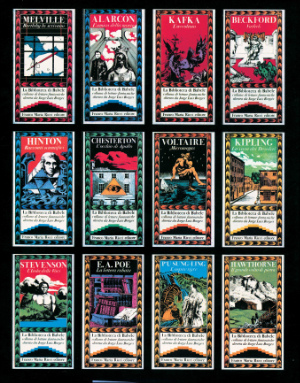 The Franco Maria Ricci foundation has these aims - the preservation of books and the Franco Maria Ricci art collection, promotion of the Labyrinth cultural events and the restoration of the landscape. The Franco Maria Ricci foundation has these aims - the preservation of books and the Franco Maria Ricci art collection, promotion of the Labyrinth cultural events and the restoration of the landscape.
“There are two main aims of the foundation. The first is the preservation of my books and art collection, promoting the (many) cultural events of the labyrinth, as far as possible staying loyal to the original inspiration. The second, which is very dear to me, concerns the landscape and botany, and deals with the restoration of the Po landscape. In my lifetime, I’ve sadly seen the deterioration of the places of my youth.
It was the time when I was continually moving between Parma and Milan, long the Autostrada del Sole (the Sun Motorway) which had just been inaugurated; at either side the passing plain was fertile, clean, full of herbaceous crops, farmhouses, barns, villages seen in the distance, mists and frost.
I believe that the gentleness of the landscape and the beauty of the dawns and sunsets contributed to my happiness.
Today, every time that I travel along the same road system, I see the back of unadorned industrial sheds, with piles of detritus, disused and broken machinery, rubbish and industrial waste pass sadly and without interruption.
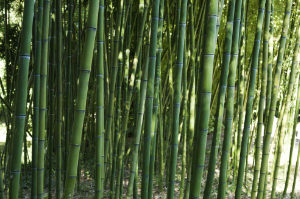 I know that those buildings offer many opportunities for work and well-being. They certainly can’t be eliminated but I wonder if the problems linked to their disagreeable appearance can’t in some way be remedied.
The answer is ‘Yes’ and it’s linked to my late passion for bamboo.
The box is the traditional plant for labyrinths. Perhaps I, too, would have used it if I’d been younger but box grows slowly while bamboo is very fast.
Age caused me to fall in love with this wonderful plant, which is one of the many gifts of the East (and now also the name of one of my dogs).
If bamboo (my park has 25 different species) has grown so lush it’s perhaps because it breathes easily, a short way from a river whose name smells of China - the Po.
It’s an extraordinary plant which doesn’t become diseased or drop its leaves in winter. Due to its impatient growth, it absorbs great quantities of carbon dioxide leaving the oxygen for us (Kyoto Protocol) and doesn’t cause disasters because of typhoons or tornadoes (no-one ever died because a bamboo stem fell on them).
I hope that, in a few years, this plant will become an important element in the Po landscape and our businesspeople will accept the disguise of their sheds with the delicate green curtain of my stems. Changing the face of the Val Padana, restoring its lost grace, is now the most ambitious of my dreams. The Foundation will supply the plants necessary and a free consultancy service.
The cost of the operation is negligible, 100 bamboo plants don’t cost more than 2000 euros and grow without difficulty.” I know that those buildings offer many opportunities for work and well-being. They certainly can’t be eliminated but I wonder if the problems linked to their disagreeable appearance can’t in some way be remedied.
The answer is ‘Yes’ and it’s linked to my late passion for bamboo.
The box is the traditional plant for labyrinths. Perhaps I, too, would have used it if I’d been younger but box grows slowly while bamboo is very fast.
Age caused me to fall in love with this wonderful plant, which is one of the many gifts of the East (and now also the name of one of my dogs).
If bamboo (my park has 25 different species) has grown so lush it’s perhaps because it breathes easily, a short way from a river whose name smells of China - the Po.
It’s an extraordinary plant which doesn’t become diseased or drop its leaves in winter. Due to its impatient growth, it absorbs great quantities of carbon dioxide leaving the oxygen for us (Kyoto Protocol) and doesn’t cause disasters because of typhoons or tornadoes (no-one ever died because a bamboo stem fell on them).
I hope that, in a few years, this plant will become an important element in the Po landscape and our businesspeople will accept the disguise of their sheds with the delicate green curtain of my stems. Changing the face of the Val Padana, restoring its lost grace, is now the most ambitious of my dreams. The Foundation will supply the plants necessary and a free consultancy service.
The cost of the operation is negligible, 100 bamboo plants don’t cost more than 2000 euros and grow without difficulty.” |
|
 |
 |
 |
ESSAYS AND ARTICLES |
 |
|
 |
|
 |
 |
 |
| |
 |
The FMR Collection
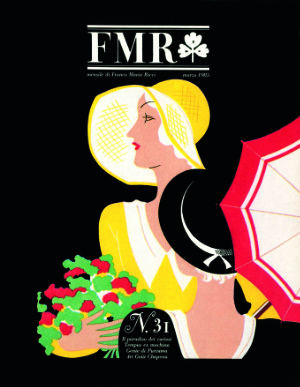 Eclectic and curious, the art collection reflects Franco Maria Ricci’s taste. It ranges from the great sculpture of the 17th century to neoclassical, from still life with skulls to busts and portraits of Napoleon’s time, from romantic and popular painting of the 19th century to the elegance of Deco period, artists with a strong style living with other, lesser interpreters loyal to the forms of a civilisation. Eclectic and curious, the art collection reflects Franco Maria Ricci’s taste. It ranges from the great sculpture of the 17th century to neoclassical, from still life with skulls to busts and portraits of Napoleon’s time, from romantic and popular painting of the 19th century to the elegance of Deco period, artists with a strong style living with other, lesser interpreters loyal to the forms of a civilisation.
“I try to look at as if I’d never seen it before, it’s a sort of Cabinet of Curiosities which inevitably reflects me, my taste and indirectly, through certain absences, my rejections.
Works of great artists rub shoulders with others by lesser or popular artists. Here and there, there are accumulations around a period, a genre or a sensitivity.
Many sculptures refer to the 18th century and the Empire - works by Houdon, Lemoyne, Caffiéri, Boudard, Collot and Chinard, all artists of the Age of Enlightenment. Then, when Neoclassicism entered the Napoleonic sphere (so that of Bodoni), here are the busts of the swarming Bonaparte family signed by Bosio, Bartolini, Ceracchi, Fontana, Thorvaldsen and Chaudet.
A step back in time to the revolutionary optimism and Napoleonic glories act as a counterpoise to my Vanitas, still life with skull, often like those of Grand Guignol, sometimes the work of famous artists, like Jacopo Ligozzi.
There are Mannerists (Ludovico Carracci, Girolamo Mazzola Bedoli, Luca Cambiaso, etc.), and the great sculpture of the 17th century (Bernini, Foggini, Merlini etc.), artists linked to the golden age of the Duchy of Parma (Julien de Parme, Boudard, Baldrighi, Ferrari and Petitot), and 19th century romantic and popular painting (Hayez, il Piccio, Fabris etc.).
Lastly, there are the works of Adolfo Wildt, Ligabue, Libero Andreotti, Corcos, Savinio and Erté or the so-called chryselephantines, small drawing-room statues by Chiparus and other Deco artists, to record my approaches to the 20th century. This is my collection.
I’ve supervised the staging - it won’t be the casual one of a picture gallery nor the scientific one of a museum; it will be by association (of ideas and forms) will not refrain from underlining the parallelisms existing between my editorial choices and those as a collector.”
BODONI
In 1963, FMR discovered Bodoni and fell passionately in love with the work of the great typographer and his sublime Manual of Typography. This was the origin of the decision to become a publisher and return to the use of the exclusive Bodoni typeface, constantly aspiring to the aristocratic aesthetics of the supreme neoclassical typographer. Ricci adopted a Bodoni motto - Je ne veux que du magnifique et je ne travaille pas pour le vulgaire (I want only the beautiful and I don’t work for the commonplace).
In just a few months, he had made a facsimile reprint of the two tomes of the Manual of 1818, adding a third one of historical and philological comment. No-one has brought the name and work of Bodoni to wider knowledge than FMR; he’s done it mainly with the constant use of his typeface in the books, magazines, catalogues, advertising, brochures and book tokens of the publisher that was about to be set up.
But Ricci’s mad passion for Bodoni is also clear in the collector’s ardour. His Bodoni collection was becoming the largest, choicest and fullest of rarities of our time, second only to the unreachable historic collections, already started when Bodoni was alive. However, many volumes and leaflets of these collections had already found their way into his. “In 1965, after two years of preparation and work, I published my first book - Bodoni’s Manual of Typography, two volumes in facsimile plus a third one of research.
Why did I choose Bodoni? Mainly for love and interest in graphics, an aspect of culture, on the border between art and industry, which contains an essential operator, the most important example of how graphics, above all, consists of art and thought. I think that Bodoni should be rediscovered with a modern eye, made alert and shrewd by recent visual experiences. Various schools of the last century, from Pop-art on, have an idea in common with the neoclassical Bodoni - the desire for the mark to go beyond its original function, to free itself of the normal context to live in an autonomous, fantastic dimension that only culture makes possible. For Bodoni, painting with the alphabet mattered, creating emotion with four letters on the white, the very whiteness of the page. His mission was not to propagate the culture and texts of his editions but to invent graphic design, the art that exists now but didn’t before him. To date, typographers have always heard of Giambattista Bodoni as the most saintly of their kind, and his effigies hung in some workshops seem to correspond to the icons of St Joseph in a joiner’s workshop. Official culture, however, approached him with superficiality and presumptuousness - a skilful artisan, a king of the kind, a person worthy of being remembered but rarely a true artist, capable of having thought, felt and made important choices in the free and timeless dominion of art. It is only in recent years that critics have taken greater interest in the applied arts, industrial design and those experiences intended for consumption, like the Bodonian one, or which use elements of daily life.” |
|
 |
 |
 |
BUILDINGS |
 |
|
 |
|
 |
 |
 |
|
|
 |
|
 |
 |
 |
 |
BIBLIOGRAPHY |
 |
|
|
 |
|
 |
 |
 |
WRITINGS
BY THE ARCHITECT |
 |
|
|
 |
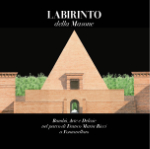 Franco M. Ricci, Vittorio Sgarbi, Corrado Mingardi, Giovanni Mariotti, Antonio Fernàndez Ferrer, Labirinto della Masone. Arte e Delizie nel parco di Franco Maria Ricci a Fontanellato, Ricci Editore, Fontanellato (Parma) 2014 Franco M. Ricci, Vittorio Sgarbi, Corrado Mingardi, Giovanni Mariotti, Antonio Fernàndez Ferrer, Labirinto della Masone. Arte e Delizie nel parco di Franco Maria Ricci a Fontanellato, Ricci Editore, Fontanellato (Parma) 2014 |
|
|
|
 |
 |
 |
 |
EXHIBITIONS |
 |
|
|
 |
|
 |
 |
 |
|
|
 |
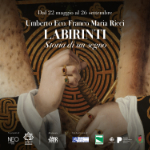 Umberto Eco, Franco Maria Ricci. Labirinti. Storia di un segno, Casalbarbato, Parma (Italy), Labirinto della Masone, 22 may 2021 / 20 march 2022 Umberto Eco, Franco Maria Ricci. Labirinti. Storia di un segno, Casalbarbato, Parma (Italy), Labirinto della Masone, 22 may 2021 / 20 march 2022 |
|
 |
 |
 |
CREDITS |
 |
|
 |
|
 |
 |
 |
| |
 |
Photo © Massimo Listri, Marco Campanini, Archivio Franco Maria Ricci
Courtesy of Archivio Franco Maria Ricci |
|
 |
  |
 |
|
|